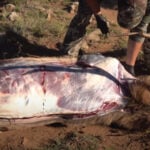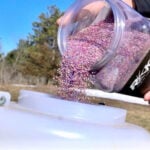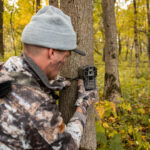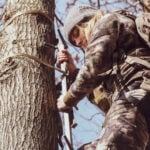One common mistake often made by bow hunters is hunting their stand locations at the wrong time of day.
While scouting for deer sign is an important role in locating the deer that you’re hunting, understanding what time of day the deer are using these areas can be just as important to filling your tag.
When it comes to bowhunting success it takes both the right place as well as the right time.
Keep in mind the information below is a general guideline for hunting morning locations and evening locations.
When it comes to deer hunting there are no absolutes, so be prepared to adjust your hunting locations and tactics to your individual situation.
Morning Treestand Placement
As a general rule of thumb, it is best to avoid hunting primary food sources in the mornings. Whitetails are typically most active during the night, much of which they spend feeding.
Large agricultural fields is where most whitetails spend the majority of their time in the evenings and they will often remain in these fields until 1 to 2 hours before daylight.
At this time they may begin heading back towards cover where they will bed down for the day.
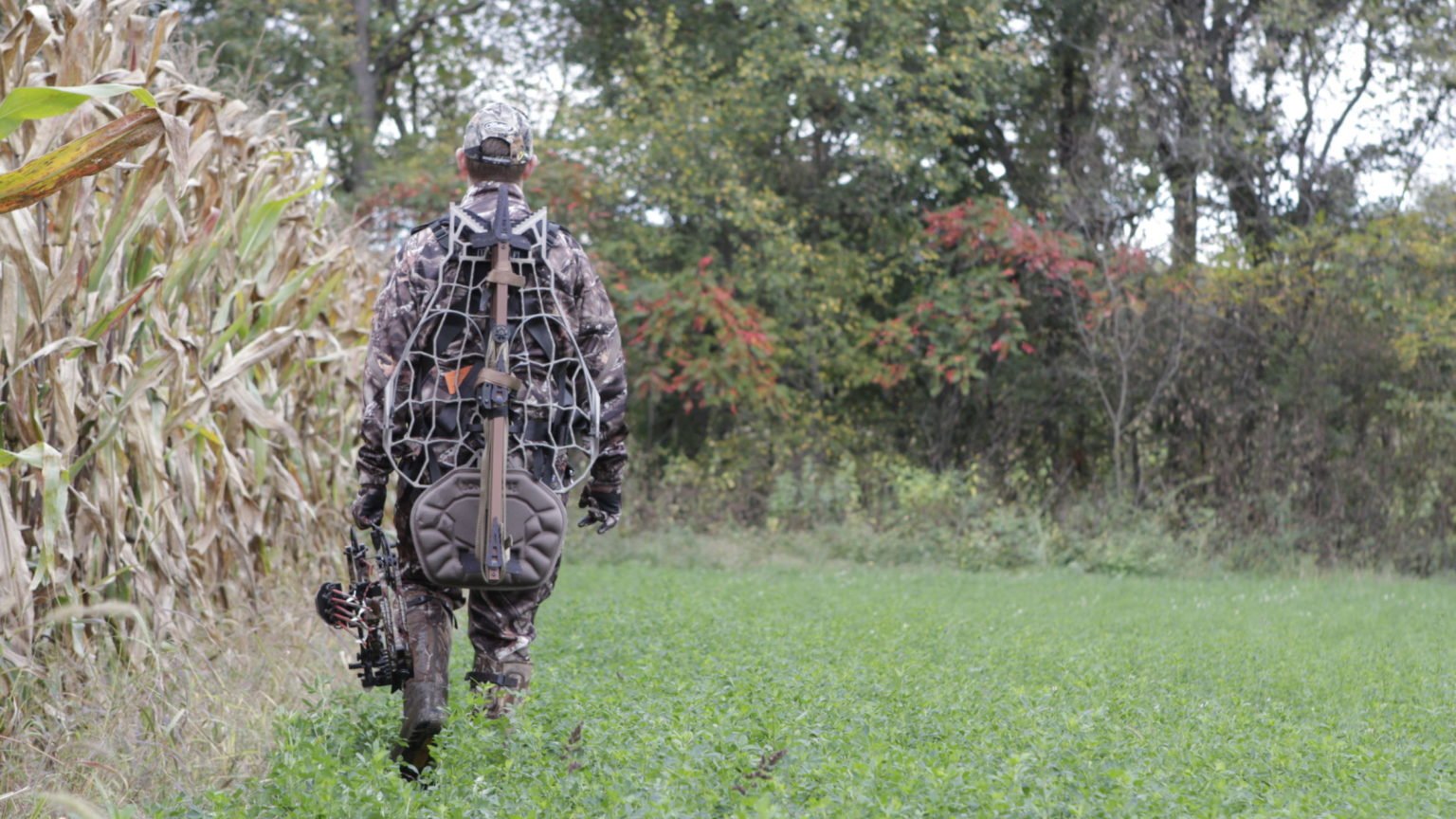
You stand a very good chance of spooking deer on your way into your stand if you are trying to hunt over a food source, or too close to one, in the morning.
Walk into that food plot you spent hours working on this summer an hour before daylight and chances are you’ll spot several sets of eyeballs in your flashlight before you hear the telltale snort of a whitetail headed the other direction.
Avoiding food sources in the morning includes not just hunting over field edges, but the entrance route to your stand a well.
While an open field or field edge may be the easiest way to your stand, it can also be the easiest way to ruin a morning hunt before it even begins.
In order to go undetected try to slip into your stand using natural features such as creeks, ravines, and standing crops to your advantage.
Take care to avoid walking field edges or areas within sight or earshot of a food source where you think deer may be.
In most cases this is going to make your morning walk longer and more difficult than you’re used to, however it will almost surely increase your morning deer sightings.
So if not food sources, where should you hunt in the mornings? One of the most productive places to hunt during the morning are as close as you can get to a good bedding area.
The intent is to catch deer coming off the feed sources at night and working their way back to safety to bed for the day. This tactic, although productive, does pose several risks that must be taken into consideration.
First, you need to set up between the food and the bedding area. If you set up on the wrong side of the bedroom you may find yourself playing more games on your phone than watching deer.
When picking your stand location it is helpful to keep in mind the various food sources available to your local whitetails and hang several stand sets that you can utilize as the food sources change.
When farmers begin taking in crops or acorns begin to drop the deer will begin utilizing different food sources and, in some cases, different bedding areas as well.
A general rule of thumb is that you can never have too many stand locations to pick from.
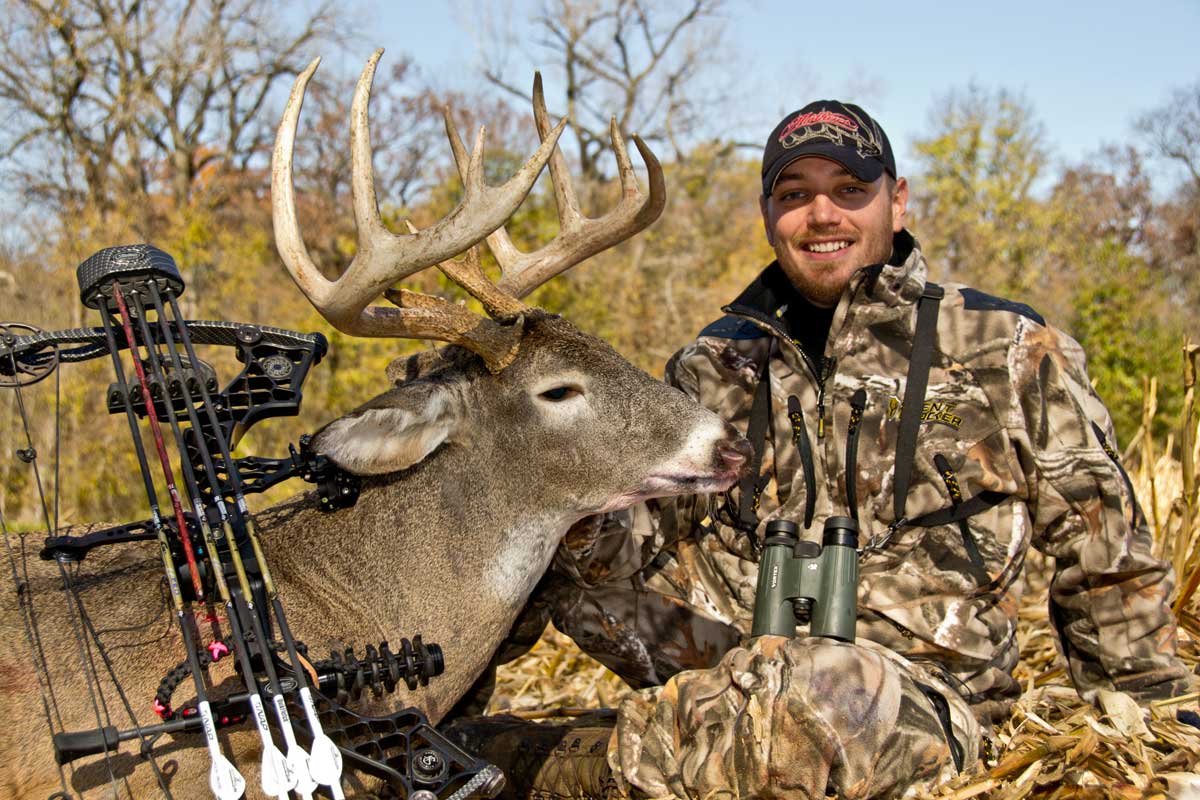
Second, watch the wind carefully. Sitting in between a food source and bedding area won’t do you any good if your wind is blowing to the deer before you can get a shot.
Many hunters prefer to hunt on a cross wind, which is blowing perpendicular to both the bedding and feeding areas.
This allows you to get into the stand without blowing out deer from the food source, yet doesn’t expose you to any deer that may happen to slip into the bedroom from another direction without you knowing.
Of course you don’t always get this ideal wind which means that you’ll often have to pick a stand with the wind blowing at least partially into the bedding area.
Be sure to hunt these stands very sparingly as you may only have one or two opportunities to hunt them on a non-perfect wind before they are blown out.
However, if you’ve played your cards right once chance may be all you need.
When picking a morning stand you have to consider not just your entrance but your exit route as well.
Don’t walk through the middle of the bedding area on your way back to the truck unless you enjoy not seeing deer from that stand any longer.
They key is to remain undetected so try exiting through those food sources you avoided in the morning, where you’re less likely to encounter a bedded buck.
In many cases, the exit from your stand will be different than your entrance in order to remain undetected.
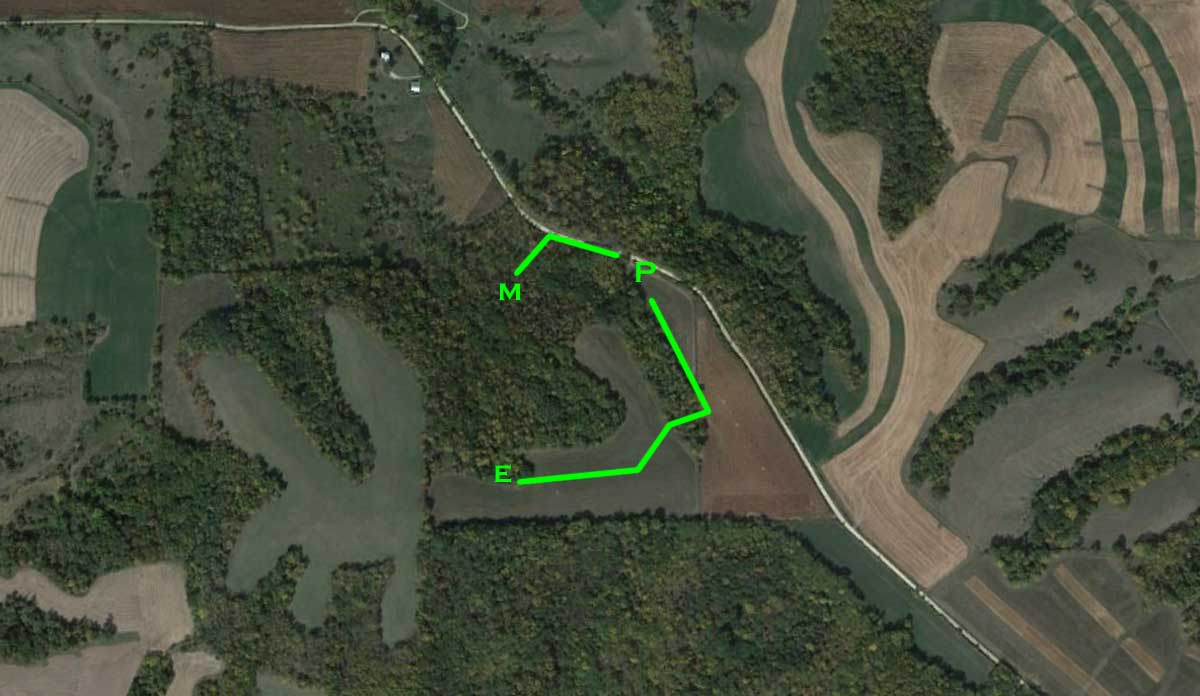
Finally, make sure you get into your stand early. Mature bucks prefer to be off the food sources and headed back to bed well before daylight.
If you’re walking into your stand 20 minutes before shooting light and run into a buck headed the same direction you may have just blown your chance.
Try to be in your stand and ready to go at least an hour before shooting light, which often means leaving the truck a solid 2 hours before shooting light.
This gives you time to cool off from that extra-long hike, get your gear ready and let the woods settle back down before the sun peaks over the horizon.
If you do nothing else, try getting into your stands much earlier than you do know and you’ll be surprised at how many more deer you will begin to see.
Evening Treestand Placement
During evening hunts one of the most common hot spots is a hot food source. The majority of your deer will be bedded down during the daytime and get up near dusk to begin feeding.
In most cases they will begin to work their way towards food sources where they can chow down all night under the cover of darkness.
Does will almost always be the first deer to enter a field at night, with most mature bucks not willing to expose themselves until the cover of darkness is close.
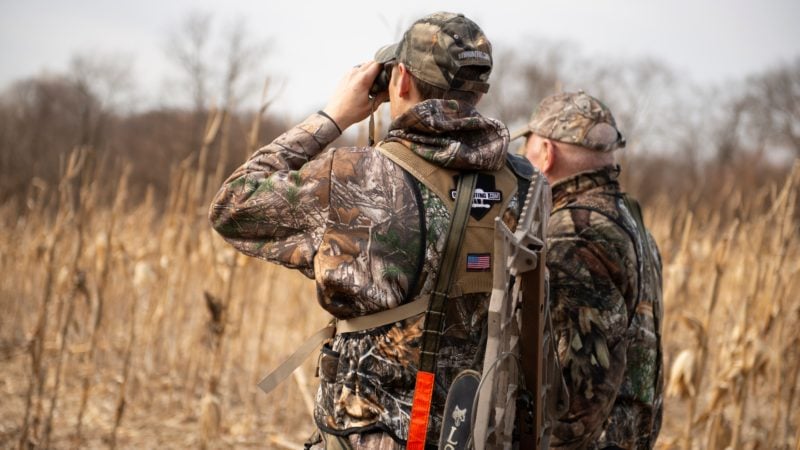
Just like hunting during the morning you need to be aware of your wind direction and approach to the stand. Your wind should typically be blowing from your location towards the food source, or perpendicular to it.
Make sure to avoid having your wind blow directly into the area you expect the deer to approach from (the bedding area.
While this seems like common sense you’d be surprised at the number of hunters who simply pick a stand on the edge of a field without paying attention to wind direction. If the deer smell you before presenting a shot, the jig is up.
Approaching your stand doesn’t necessarily require as much work as your morning sets since walking through or on the edge of your agricultural fields is a great way to get into your stand undetected.
The key is to avoid walking through any timber or locations you think deer may be bedded such as CRP, overgrown pastures, or any thick cover.
If you just go trouncing through the middle of the woods on your way into your stand you may very well blow out the bedded deer before they have a chance to make their way to your food source.
If possible, try to walk as far from the edge of the field where you believe the deer will enter as possible. This can help avoid bumping any deer bedded near the field edge, and also minimize the amount of scent you leave behind for later.
For those of you with good agricultural fields or food plots, and unpressured deer, you may have good luck directly overlooking the food source.
As seen on TV, many a big buck has met his maker while feeding in a food plot or bean field during broad daylight. However, as many hunters have found out, sitting directly on a food source may provide consistent sightings of does and small bucks but not the mature deer you’re after.
This can be attributed to the fact that often times big bucks like to hang back in the woods and wait for the cover of darkness before coming out into the open. After all, they didn’t get that big by being stupid.
In these cases you’ll often find a heavy concentration of buck sign (rubs and scrapes) either just inside the field edge, or just outside of the bedding area.
If you start seeing this increase in sign during mid-October but no buck sightings in the fields during shooting hours you may need to move your stand in closer to the bedding area to try and catch these bucks while they are staging.
Staying mobile by either using a climbing stand or a set of Lone Wolf climbing sticks and hang-on stand can present a huge benefit to the bow hunter.
A great way to help you determine when the bucks are visiting your food sources is to use a trail camera. When it comes to trail cameras many hunters simply use them to gather an inventory of their deer herd, but not as actual scouting tools.
If you can change your way of thinking and place your camera in strategic areas to tell you when deer are active it can help you figure out which places to hunt, and which places to avoid.
If you are getting nothing but night time photos of your target bucks on field edges, try moving back 100 yards or so and see if you can surprise him before darkness falls.
Just be careful not to go too deep, or your risk bumping him out of his bed. Going in after a mature buck is a risky game and requires the utmost in patience and stealth. Knowing exactly where he’s bedding can be the key to punching your tag with the buck of a lifetime. This is where post season scouting from the previous spring can really pay off.
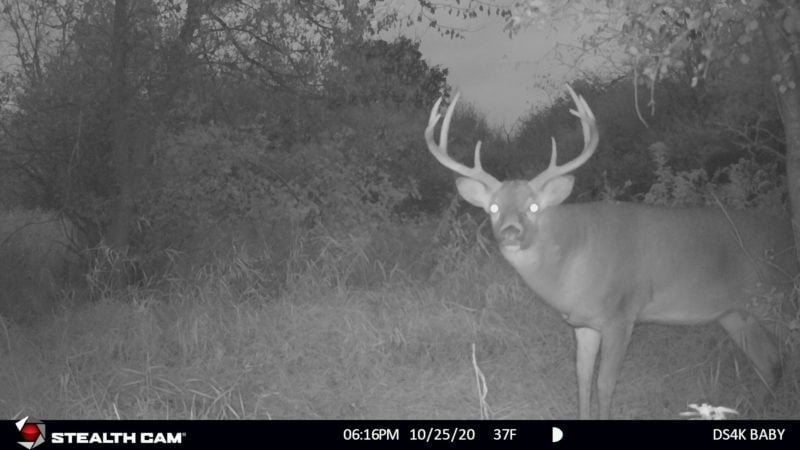
Another overlooked evening set that often times coincides with staging areas are acorn drops. Many hunters often underestimate the power of acorns when it comes to whitetail hunting, which is a big mistake.
There are few foods a whitetail enjoys more than a fresh crop of acorns, especially white acorns. If you can find a white oak that’s dropping acorns in between a bedding area and your primary food source you may just have found one of your best evening setups.
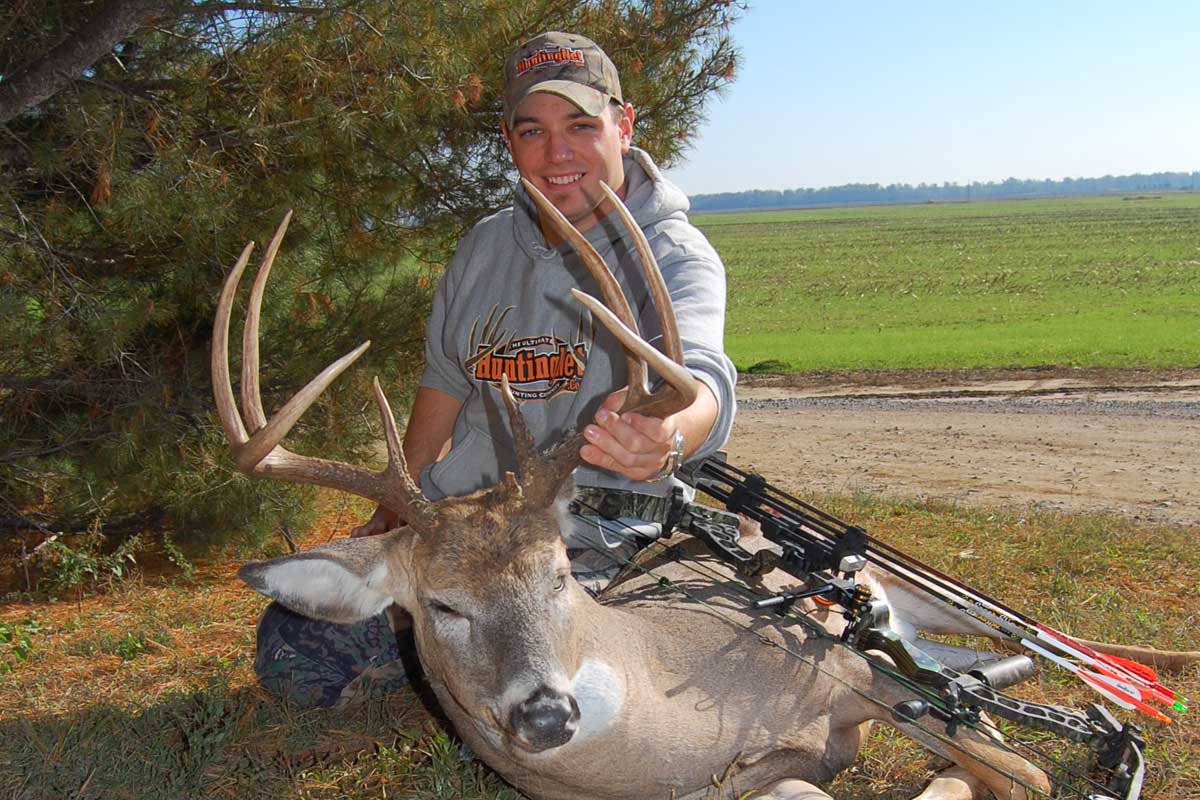
Be Ready To Move Your Treestand
The above tips are simply a guideline that should help you get close to the deer you’re hunting and be able to observe their movements and patterns.
With a little bit of luck (and some newfound skills) you’ll be able to hang a stand and kill a deer from it using these tips. However, that may not always be the case.
Bowhunting is a game of inches and sometimes you’ll find that your stand is close but just not close enough to give you a shot. When this happens you need to be ready to move.
Another mistake bow hunters make is hunting the same stand over and over again, hoping that someday a deer will walk within range.
While there are certain stands that can produce year in and year out finding those “killing stands” isn’t as easy as it sounds. Sure, you may have SEEN a buck from this stand two years ago, and your uncle may have killed one with his gun a decade ago, but what is going on in your woods today?
As food sources change from year to year and other factors including hunting and outside pressure change, deer will alter their movement patterns. In these cases you need to be ready to move.
The biggest reason most hunters don’t move their stands more often is a combination of laziness and the difficulty of moving stands.
If you’re using a ladder stand you can pretty much forget about being mobile. Likewise, using screw-in steps and heavy steel hang-on stands can present quite the challenge as well.
Having a good, lightweight treestand setup is the only way to go when it comes to staying mobile.
Many experienced bowhunters rely on a Lone Wolf hang-on stand and climbing sticks. With this setup and you can scout a staging area with fresh sign and be set up and hunting in less than 30 minutes in almost any tree.
Often times this means the difference between success and failure.
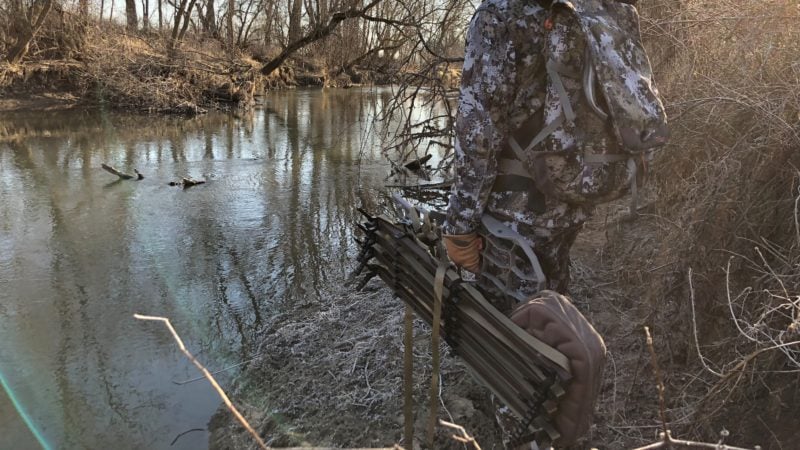
So if you find yourself in the position where you’re seeing a lot of deer but not getting close enough for a shot, try moving your stand location and see what happens. After all, the window of opportunity for most hunters is relatively small.
Between weekends and a few “call in sick” days most of us only get to spend somewhere between 5 and 10 days in a stand while the hunting is good (end of October to mid November). If you don’t do it now, you may be waiting until next year to wrap your tag around a nice set of whitetail antlers.

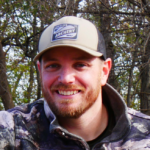 By
By 